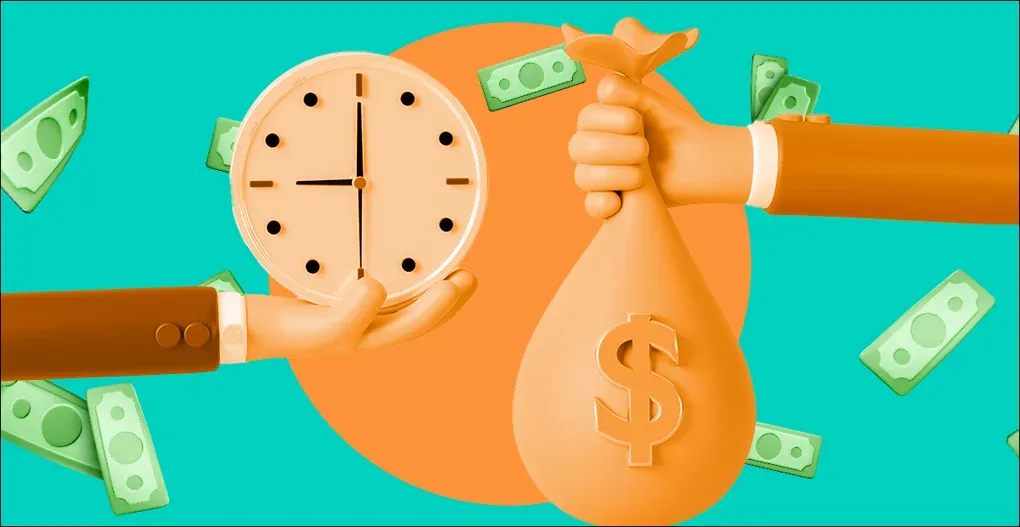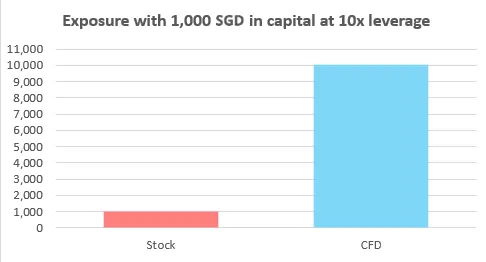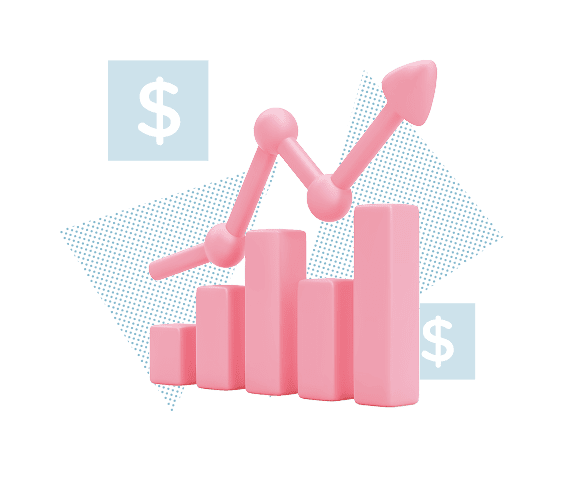CFDs: What Are They And How Do You Trade CFDs?
Updated: 22 Aug 2025
Written bySingSaver Team
Team

The information on this page is for educational and informational purposes only and should not be considered financial or investment advice. While we review and compare financial products to help you find the best options, we do not provide personalised recommendations or investment advisory services. Always do your own research or consult a licensed financial professional before making any financial decisions.
CFDs are becoming increasingly popular among traders as they allow you to speculate on the underlying asset's future prices without owning it. Learn about CFDs, how they work, and the pros and cons here.
A contract of difference, or CFD, is a derivative that allows you to speculate on the future prices of an underlying asset and make big gains from it. But it’s also extremely risky, and more often than not, traders lose a lot of money.
Find out what makes CFDs tick, the risks you should be aware of when trading CFDs, and more in this article.
What is a contract for difference (CFD)?
A CFD is a financial instrument that allows you to speculate on the future market movements of stocks, commodities, indices, currencies, or other underlying assets, without owning the underlying asset itself.
When you trade CFDs, you’re not trading to buy or sell an underlying asset but speculating on its price movements. In other words, you’re essentially betting on whether an asset will increase or decrease in value. In fact, IT IS like betting: you'll make a profit if you can correctly predict what's going to happen; on the other hand, you’ll suffer a loss if your prediction is wrong.
CFDs have been gaining popularity among investors because they allow you to make money quickly without a high starting capital. That said, CFDs are extremely risky, and you could lose more money than your initial investment.
How CFD trading works
When you trade with a CFD provider, you’re not buying or selling an asset but speculating its price movements. There are two ways to trade CFDs.
Buying CFDs in a rising market
If you believe an asset will increase in value, you can buy at the opening price. This is also known as a long trade.
If the asset’s price increases just as you’ve predicted, you will earn a profit when you sell at the closing price. The difference between the opening and closing price, also known as 'the spread', is your profit. The higher the spread, the larger your profit.
Selling CFDs in a falling market
On the other hand, if you expect an asset to fall, you can choose to sell a CFD, otherwise known as a short trade. If the asset’s value goes down as you predicted, you will have earned a profit. The lower the price goes, the larger your profit will be.
If this sounds confusing to you, remember that when making a long trade, the closing price has to be higher than the opening price for you to make a profit. Conversely, the opening price has to be lower than the closing price in a short trade.
Pros of trading CFDs
Leverage
CFDs are leveraged products, meaning you’re trading with borrowed money.
When you trade a CFD, you don’t need to put down the full trade value and need to fork out a small fraction of the trade; the rest is borrowed from the CFD provider. This is known as a margin.
The benefit of this is that you have far more purchasing power. For instance, say that you want to buy 200 Apple shares that are worth S$100 per share.
If the CFD provider sets the margin at 5%, your outlay is S$1,000 (S$20,000 X 200 X 5%). In other words, you can buy 200 shares of Apple for just S$1,000, which is much lower compared to the initial cost of S$20,000 if you were to purchase them at full price.
Moreover, you’ll get 100% of the profit if the trade goes in your favour. Going back to our example, if the shares of Apple go up to S$150 per share a week later, the spread is now S$50. If you choose to sell all your CFDs at S$150 per contract, you’ll earn a profit of S$10,000 ((S$150 - S$100) X 200).
In fact, you can get up to 10X more leverage compared to stock trading. The additional exposure means you can amplify your potential profits.

As you can see from the above table, with only S$1,000, you can gain exposure to up to S$10,000 worth of stocks, or 10X more than investing in stocks.
That said, while higher exposure means you can also potentially amplify your profits, your potential loss is also amplified.
You have access to a wide range of different asset classes and markets
CFDs allow you to trade in a wide range of markets worldwide, allowing you to trade 24/7.
Not only that, but there’s also a wide variety of securities to trade, including indices, shares, forex, commodities, and even cryptocurrencies.
Trade in rising and falling markets
In traditional investing, you buy shares of a company and make a profit when the shares rise in value or through dividend payments. However, if the market is in the red, your stocks will be in turmoil.
In contrast, CFDs allow you to speculate on rising and falling markets. This means that you can profit in both situations as long as you make the right prediction and the market moves in your favour.
» Learn More: Is traditional investing or CFDs better for you?
Cons of trading CFDs
Leverage
While leverage can greatly work in your favour, the reverse is also true: you’re liable for 100% of the losses if the trade goes south, which means you can lose more than your initial investment.
Using the above example again, say that the shares have fallen to S$50 per share and you decide to sell your CFDs before the share prices slip even further. In this case, you’re selling at S$50, resulting in a loss of S$10,000 ((S$50 - S$100) X 200).
As you can see, this means you would have lost more than the S$1,000 initial amount you had initially invested. This is why trading CFDs is extremely risky. In fact, up to 75% of retail investors lose money in CFDs.
CFDs are affected by market conditions
Since you’re speculating on the price movements of assets such as stocks and commodities, your trade is greatly affected by market conditions. For example, during times of economic uncertainty or major world events. And because CFDs are leveraged, a small change in the market can result in big losses.
That said, the market is always affected by random events which affect the price movements of financial products, not just for CFDs.
Looking for a safer way to grow and protect your cash?
A priority banking account can help you grow through your banking needs, with a dedicated Relationship Manager who will guide you with global investing insights on your wealth journey.
Overnight fee
You’ll incur a daily overnight fee if you hold your CFDs overnight. As CFDs are leveraged trading, you need to pay interest on borrowed money. You need to pay an overnight fee whenever you hold a buy position overnight.
Important things to take note of
You're trading on margin
When you trade CFDs, you’re not paying the full value of the asset upfront. Instead, you’re putting down a small percentage—this is called margin. For example, if a stock’s full value is S$10,000, you might only need to commit S$1,000 to open a CFD position.
Sounds great? It can be, but keep in mind that using margin means borrowing money from your broker. You're effectively trading with leverage, which can increase both your gains and losses.
Profits are magnified, but so are losses
Let’s say you open a CFD on DBS stock at S$30 per share, and you want to control 1,000 shares. Instead of paying the full S$30,000, your broker requires a 10% margin, so you only need to put down S$3,000.
Now, imagine the stock price rises to S$33. That’s a S$3 gain per share, or S$3,000 total profit (S$3 × 1,000 shares). On your original S$3,000 margin, that’s a 100% return.
But if the price drops to S$27, you’d lose S$3,000, wiping out your entire investment. If it falls even further, you could end up owing more money unless your broker provides negative balance protection.
This is why CFD trading is high risk. Small price changes can have an outsized impact on your capital, for better or worse. Always use stop-loss orders and manage your position sizes carefully.
You can be margin called
If the market moves against your position and your account value falls below the required margin, your broker may issue a margin call. That means you’ll need to top up your account with more funds, often at short notice.
If you don’t, your broker can close your positions to limit their risk, which might lock in your losses before you have a chance to recover. For Singaporean investors juggling multiple positions, margin calls can be financially stressful if not planned for.
CFD trading costs
CFD trading isn't free, and fees can quickly add up. Here are some common charges to watch out for:
-
Spread: The difference between the buy and sell price. It’s how brokers make money.
-
Commission: Some brokers charge a fee per trade, especially on shares.
-
Overnight financing: If you hold positions overnight, you might be charged a financing fee. Think of it like interest on borrowed money.
-
Currency conversion fees: If you’re trading foreign assets, these fees can sneak up on you.
How to reduce your risk when trading CFDs
Use stops to minimise your risk
Since CFDs are leveraged products, they come with high risk. However, you can manage the risk by setting a stop order with your CFD trading provider. A stop order will limit your loss to a certain amount, much like how limit orders work in investing. This helps to protect you from sudden market movements and also provides you with discipline.
Research, research, research
As with all investments, it’s vital that you do your due diligence before investing. The more you understand CFD and the risks involved, the better prepared you will be.
Start with a small amount
Because you’re trading with leverage, you can make a windfall.
However, it’s also a double-edged sword, as you can potentially also lose a lot of money. As such, starting with a small amount is a good way to get your feet wet, especially if you’re inexperienced in CFD. This way, you can minimise your loss to a small amount.
Invest in something that you know
While you can trade CFDs with a wide range of products, you should stick to something familiar.
Frequently asked questions about CFDs
Yes, CFDs are legal in Singapore. However, they’re classified as Specified Investment Products (SIPs), so you’ll need to meet certain criteria to trade them. This usually means passing a Customer Knowledge Assessment (CKA) with your broker, unless you’re an Accredited Investor.
There’s no single “best,” but look for licensed lenders with transparent fees, clear contracts, good reviews, and fast service. Popular names often mentioned include Orange Credit, 1 2 Lend, and Friday Finance.
No licensed moneylender in Singapore operates 24/7. Office hours are usually between 10 am and 7 pm on weekdays. Be wary of anyone claiming to offer midnight or online-only approvals—that’s often a red flag.
It’s generally safe if you borrow from a registered moneylender and understand the terms. But the high interest rates mean it’s only suitable for short-term, urgent needs.
Relevant articles
About the author
SingSaver Team
At SingSaver, we make personal finance accessible with easy to understand personal finance reads, tools and money hacks that simplify all of life’s financial decisions for you.
